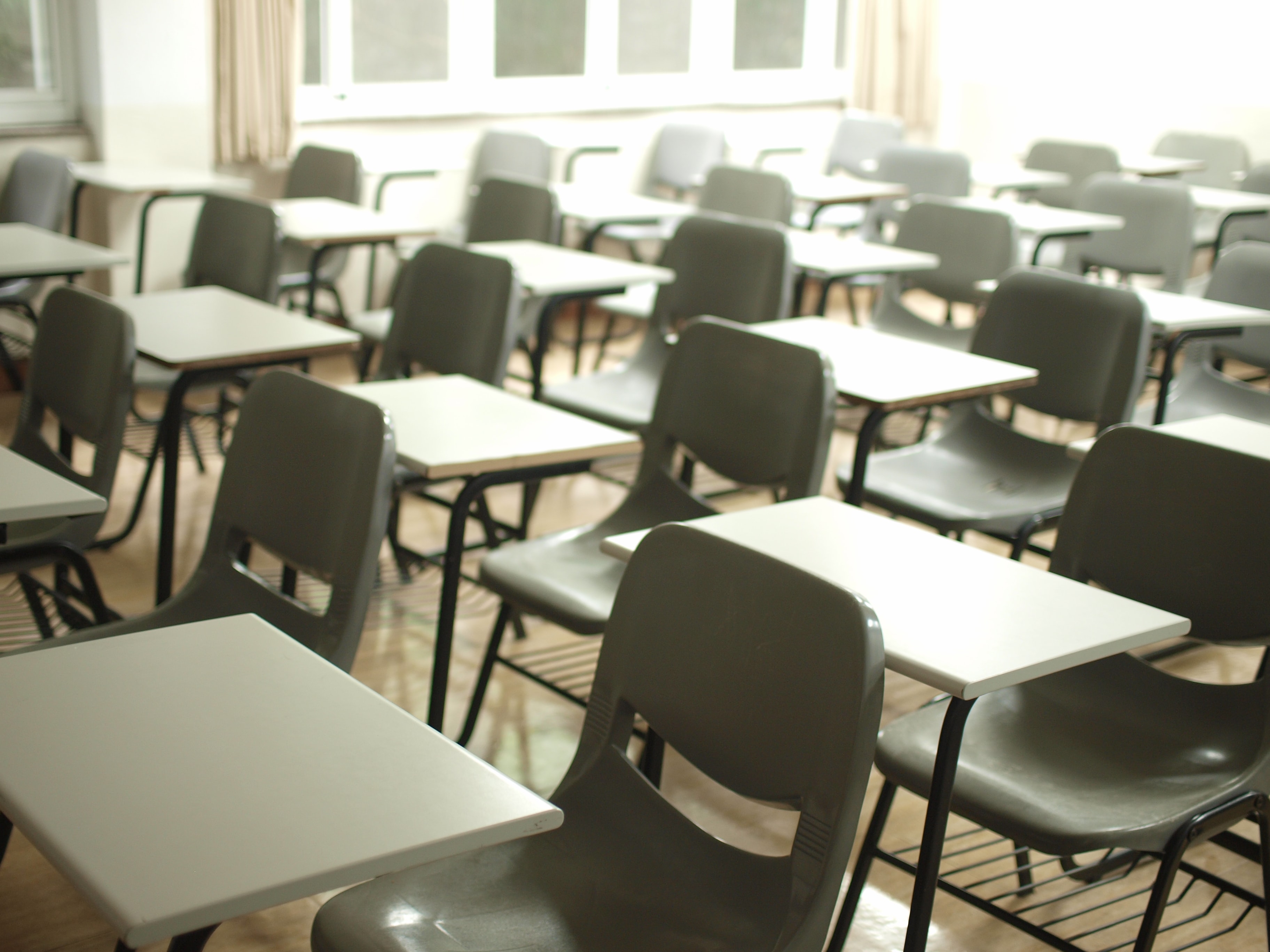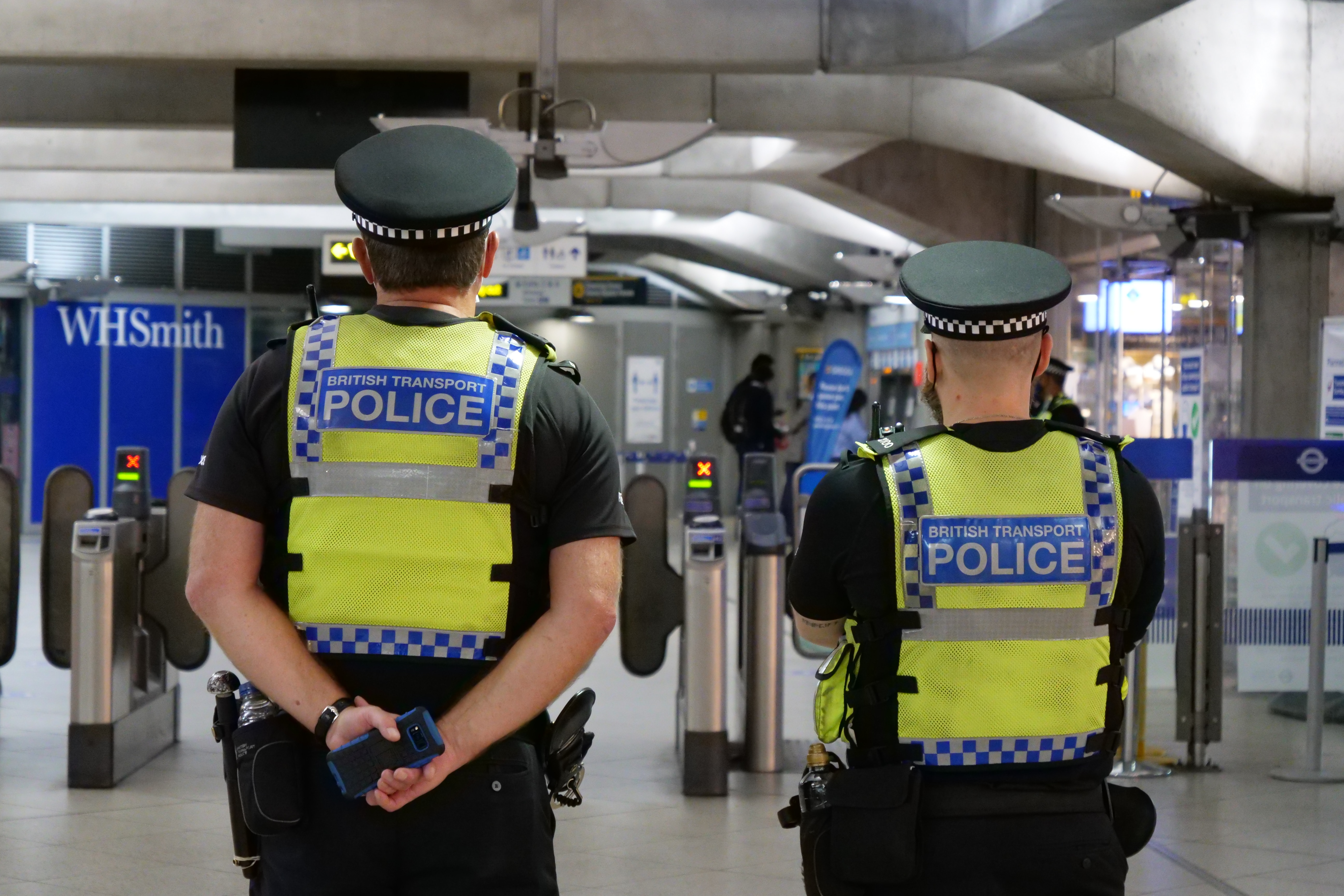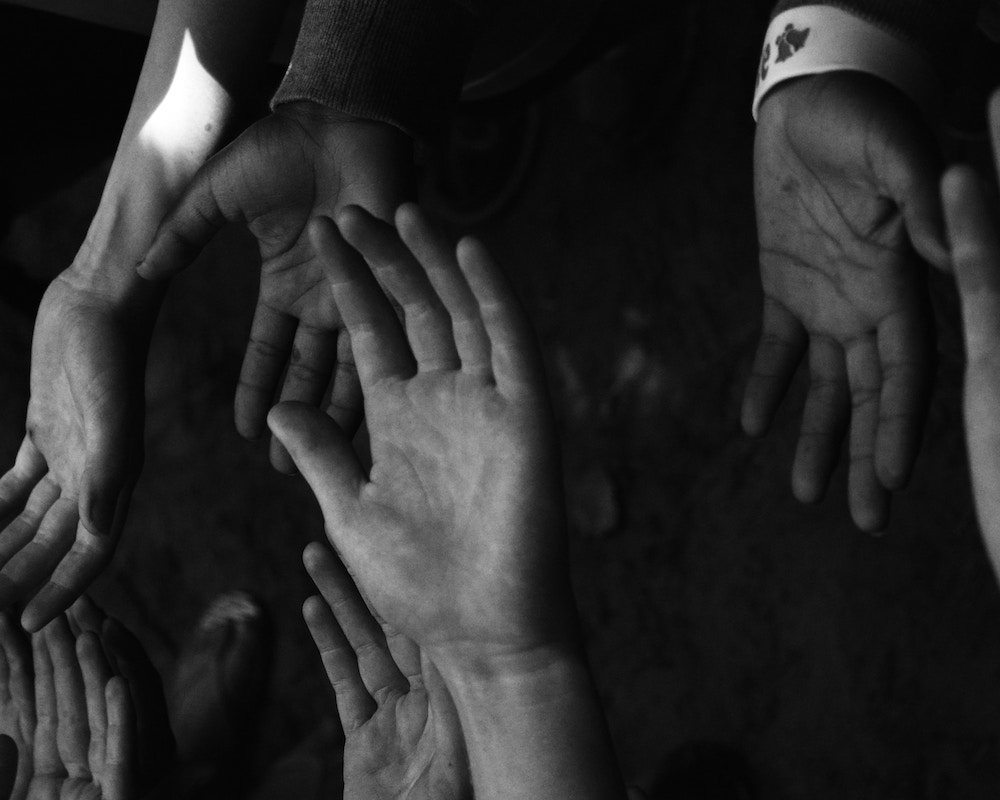The return of corporal punishment?
The days of being caned at school are long behind us. But one form of coercive, often painful, physical contact from teacher to pupil survives.
The marks of restraint are clear on the child’s arm, the bruises that outline a ‘hold’. In normal, everyday language, this means that a member of the teaching staff in a school will have laid their hands on a child who they felt needed to be restrained. In some, but not all cases, that can leave visible injuries. In most cases the memory will stay with them, a psychological mark that will never fade away. Those pictures are shared, with harrowing accounts, on a private group of parents whose children have been restrained. You can see why they won’t ever let this go, and why teaching staff and the children they restrain and seclude are both harmed by these practices.
The days of corporal punishment should be long behind us. In state schools, it was banned in 1986. My father, a secondary school headteacher in a comprehensive school, was relieved - he dreaded being asked to punish a child in that way. It was damaging for children, but also for teachers. By the time I left secondary school, corporal punishment was outlawed. Yet I still remember that the presence of the cane hovered over my younger years of secondary school, and how frightening the threat of being sent to the headteacher’s office was.
It took longer to outlaw the practice in private schools - the ban came in 12 years later in England and Wales (and even later in Scotland and Northern Ireland). One family member, who was sent to boarding school in the 1970s at seven years old, recalls being caned on his first day. He had broken a rule he didn’t even know existed. When the teacher who had assaulted him died, the obituary written about him was followed by scores of comments from former pupils, recalling the injuries he had caused to them as children. That is the long lasting impact of corporal punishment.
But today, one form of coercive, often painful physical contact from teacher to pupil survives: restraint and seclusion. Restraint and seclusion form part of what is known as restrictive interventions - ways in which staff in a number of settings, from nurseries, to police cells, mental health wards and hospitals are legally allowed to subdue ‘unruly’ children and adults. The Restraint Reduction Network, an independent group of organisations seeking to focus attention on the harms of restraint and seclusion in settings ranging from healthcare to prison to education, argues that understanding why people become distressed in certain situations is key to reducing the use of the practices.
The use of euphemisms to cover both restraint and seclusion masks what happens. For instance, seclusion can be called a ‘safe space’ or a ‘blue room’ or even a ‘sanctuary’ or ‘thinking room’.
I first started to investigate these practices in education three years ago, as evidence mounted both of their harm and also of their increasing use during the pandemic. I had previously written about the practices in asylums and mental health facilities but I had no idea how widespread they still were in school.
The argument for restraint is that it can take control of a dangerous situation in which someone could get injured. It can range from physical, mechanical (tying or securing), chemical (using drugs to subdue people) and seclusion. Seclusion is most commonly defined as isolating a child from others against their will, whether in the classroom by separation, or more usually, removing the child to another space. These can be repurposed old stationery cupboards or even in some cases a zip up tent. The practices are used both in special schools, attended by some children with disabilities, and mainstream schools.
Some schools are more likely to use seclusion, but that can have lasting effects too. One family member, who is autistic, was forced to face away from the rest of his class, only allowed to look at a wall in front of him - a form of internal, class seclusion that he remembers vividly. Other families have told me of the use of zip up tents in school as ‘calm down’ zones, and small rooms, sometimes without windows, being used for seclusion. When I first saw pictures of these rooms, I thought they were prison cells.
The use of euphemisms to cover both restraint and seclusion mask what happens. For instance, seclusion can be called a ‘safe space’ or a ‘blue room’ or even a ‘sanctuary’ or ‘thinking room’. But being zipped up against your will in a tent, or being put in another closed space can be traumatic. Equally, training companies call some of the ‘holds’ they use phrases such as ‘hugs’ - where a child is forcibly held but which can constrict breathing, or a ‘caring’ hold can be holding a child’s ear or their arm. Beth Morrison, one of the foremost campaigners to shine a light on what is happening in schools, says that words can, paradoxically, “hide what is happening”.
Some forms of restraint hurt - and some famously kill - the recent cases of people, all too often from minority ethnic backgrounds, killed by police officers kneeling on them or other holds, should haunt us. The British footballer Dalian Anderson - who had renal failure - was fatally restrained in 2016. In the US, the names of Tanisha Anderson and George Floyd bear tragic witness to the harms of restraint. Others who have died as a result of restraint in the US include disabled schoolchildren.
*
I have spoken to parents whose shock and grief about what has happened to their children in school is written on their faces. One took me along with her to her child’s parents' evening, where a teaching assistant explained, with unnecessary relish, about the ‘holds’ that she had been taught by one of the companies that has sprung up to make profits out of restrictive interventions, by teaching techniques to staff. In the case of this family, the child had been carried and thrown to the ground in the playground in a previous school, leaving the child bruised and psychologically hurt.
Another mother - Deirdre Shakespeare - told me about how her son, Harry, then five, had been strapped to a chair for long intervals at school. Harry had no mobility issues that could have been supported by this. As he was non-verbal, he couldn’t tell his parents what was happening to him but had panic attacks and night terrors.
In the case of Beth Morrison, her son Callum was badly injured at a school in Dundee between 2010 and 2013. He was left with 60 bruises on his body and was restrained by four people. Dundee City Council say that they have fully engaged with prosecutors and police and taken on recommendations. Some parents have even taken legal action in a bid to discover more about what happened to their child in school and to secure redress.
Children were bruised, grabbed, grazed, had facial injuries, broken teeth and bleeding noses.
Many of these ‘holds’ are used, with almost complete impunity, on children and young people - in the case of the school I visited it was obvious that the TA felt she had the right to do this to children who she judged to be ‘acting out.’
Although report after report from authorities, ranging from the Children’s and Young Peoples’s Commissioner Scotland, to the EHRC, to the Department for Education in Northern Ireland has been released detailing the harms of such practices, especially to children, they are still being used. The latest findings by a Scottish charity, Positive and Active Behaviour Support Scotland (PABSS) shared with me and others in July 2023, that supports families with disabled children, are shocking. The charity was set up by parent and campaigner Beth Morrison in 2010. Her work has shown previously in graphic detail that children were being restrained and secluded in schools. In 2017 the Scottish government produced a report called Involved, Engaged and Included Part 2 (IEI2). This was supposed to create a more positive atmosphere in schools towards managing exclusions and understanding behaviour better.
Six years after it was written, the charity is still finding widespread use of these practices against children - almost all of whom had disabilities ranging from autism, to asthma, cerebral palsy, and many other conditions. Out of the 1,756 cases collected since June 2017, there were nearly 1,500 uses of restraint and more than 1,100 uses of seclusion (with nearly 1,000 children being secluded multiple times). Beth adds that there are many more cases in England, Northern Ireland and Wales, where she has also collected figures since 2019. The global figure for all four nations since then of parents reporting that their children have been restrained or secluded is over 3,500 - a figure she describes as “shocking”.
Nearly 80% of the children were under eight years of age. Many of the children had been injured, but it was only rare that the injuries were recorded or reported to the police or child protection. Children were bruised, grabbed, grazed, had facial injuries, broken teeth and bleeding noses. As you might expect, children did not want to go to school and were terrified of being restrained or secluded again.
If you think the situation is bad in Scotland, it’s no better in England and Wales.
In June 2021 the Equality and Human Rights Commission (EHRC) reported on the monitoring and recording of the use of restraint in schools in England and Wales, across primary, secondary and special needs schools. The EHRC carried out the work because it had heard from parents about their children being restrained or secluded - and then did its own survey. The EHRC found that whilst most schools had a policy on the use of the practices, one third did not analyse the use of restraint and many did not record what they were doing. In addition, few looked at which pupils were most likely to be restrained, such as whether they were from particular racial backgrounds or had disabilities. Given that most other uses of restraint have found that people from ethnic minorities are most likely to be restrained, as well as disabled people, this was particularly worrying. New guidance is expected for mainstream schools (guidance has been in place covering the practices in special schools since 2019, though they are still widely used), but it has been a long time coming. This year, the United Nations Committee on the Rights of the Child (UNCRC) has asked the UK to drastically reduce the use of such practices in schools, except as a last resort.
In Northern Ireland, things are more hopeful, despite the lack of a functioning government, with the education authority consulting on introducing statutory guidance on the use of restraint and seclusion in schools, with some suggestion that isolation rooms, or seclusion, may even be banned.
These practices aren't confined to the UK. In the US, there is pushback against the widespread use of both restraint and seclusion. The model Paris Hilton has shared a graphic account of what happened to her at a Utah boarding school for teenagers. She was both restrained and secluded and told me in 2021 that the room she had been held in had scratch marks on the walls, which were also smeared with blood. Since, she has helped to change the laws in Utah on the practices and has also supported calls for law reform here.
I now think of the use of restrictive practices as the last gasp of a philosophy that believes that corporal punishment has a place in schools.
After all, there is another way. - In Japan, schools have developed what is called behavioural support. They respond to violence and other problems by trying to find out why some students react in ways that can be challenging - and see behaviour as a way of communicating. The results in Japan are promising - but it has to be an approach championed by the whole school. Another project has shown that it can work in schools in Cyprus, Finland, Greece and Romania.
Schools are understaffed and teaching staff justifiably fear being injured by some children and young people. In the school my own children went to, one young person threatened physical violence with a makeshift weapon against a member of the teaching staff - completely horrific for everyone concerned. But that young person had themselves been subjected to violence and neglect for their entire childhood. More of the same wasn’t going to help anybody, and I feel for schools that mop up and absorb problems that aren’t of their own making.
I now think of the use of restrictive practices as the last gasp of a philosophy that believes that corporal punishment has a place in schools, that to manage behaviour in schools there needs to be use of force or other forms of punishment. Of course, teaching staff should never be harmed by pupils, and pupils sometimes also need to be protected from each other. But using techniques like restraint and seclusion should be a last resort.
I think of these practices as hovering dangerously close to a return of physical punishment by the back door. We need to ask why it is happening, what possible benefits it can have - and how we can more positively address behaviour in schools without harming children.
The Lead is now on Substack.
Become a Member, and get our most groundbreaking content first. Become a Founder, and join the newsroom’s internal conversation - meet the writers, the editors and more.





